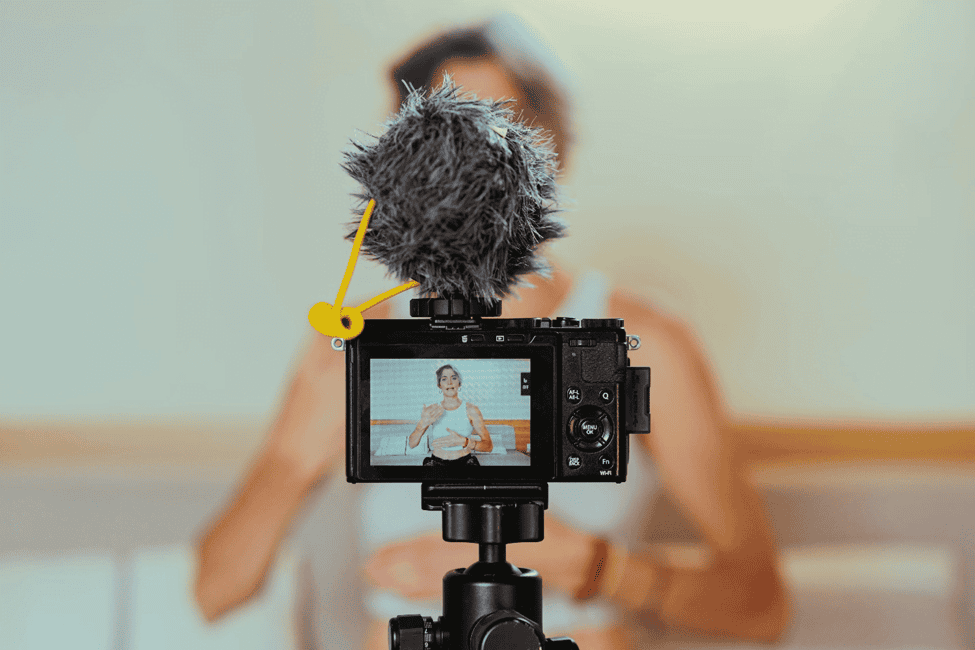Most savvy business owners know by now that incorporating influencer marketing into their broader digital marketing strategy should be a no-brainer.
With the total value of the influencer marketing market reaching almost $200 billion in 2023, this segment can truly be a treasure trove of value, profit, and success for companies spanning all sectors.
When handled correctly, influencer marketing can hugely boost brand awareness, skyrocket customer loyalty, and even thrust lesser-known companies into the limelight. But how do you know if your influencer marketing strategy is achieving the results you expect? That’s where influencer marketing analytics comes in.
To find out more about this, and to discover how you can get started with influencer marketing analytics, keep reading our comprehensive guide.
Influencer Marketing Analytics: Definition and Importance
As you might expect, influencer marketing analytics refer to all those tools and processes that enable a company to analyze the performance of its influencer marketing strategy – both on an individual campaign level and on a wider level.
In many ways, they follow the same framework that a company would use to analyze its enterprise architecture performance (read this if you’re wondering: what is enterprise architecture?).
First, you’d need to decide what metrics to track, then you’d want to establish where you’re going to track those metrics (and the tools to use), and finally, you’d want to look at the findings and adjust your actions accordingly.

Free to use image sourced from Pexels
In the context of influencer marketing, the benefits that an analytics strategy can offer include:
- It enables you to qualify influencers prior to starting a collaboration: How many followers does your chosen influencer have? Do they work with any of your competitors already? What kind of audience do they target?
- It allows you to stay ahead of important metrics: To find out if a partnership with an influencer is worth continuing, analytics can tell you everything that matters – from ROI to engagement rate, from conversions to follower count.
- It helps you optimize your social media content strategy: How do you know whether your audience prefers short-form videos or is more fond of engaging with funny memes, GIFs, and infographics? With analytics, of course. So, instead of asking your influencers to create whatever content suits them, look at what the data tells you first. Based on that, you’ll be able to optimize your overall social media content strategy and deliver exactly what your followers are craving.
- It protects compliance and privacy: Ensuring that the influencers you’re working with are abiding by specific laws as well as ethical guidance is paramount, or your brand could be severely damaged. Analytics lets you have a full, real-time, and transparent view of legal compliance to help you safeguard your reputation, strengthen trust and loyalty with your audience, and keep you on the right side of the law. Moreover, staying informed about new trends in influencer marketing ensures that your compliance practices evolve along with the industry.
Crucial Metrics To Track
Below are some of the most important metrics you’ll want to track. We do recommend incorporating, at the very least, those referring to event tracking (here’s a useful event tracking guide), as they can be priceless when it comes to understanding how your campaign is performing across channels.
Reach
This refers to the total number of unique users who have come across the content created by your influencer. Think about it as a way to measure the overall exposure of a specific piece of content or your entire influencer marketing campaign.
The higher this number, the higher your brand exposure. It goes without saying that teaming up with an influencer who has a large following will usually bring more exposure and will, therefore, translate into a bigger total reach.

Free to use image sourced from Pexels
Impressions
Things get a bit more complicated when we consider impressions. This metric refers to the total number of times that a piece of content was viewed by both unique users and by the same user. While reach measures exposure, impressions measure actual visibility.
Engagement Rate
Whether you’re focused on Instagram engagement or are currently interested in boosting engagement on Facebook or LinkedIn, one thing is for sure: this is one metric you can’t do without. The engagement rate is the result of a combination of things such as likes, comments, and shares on a post, to measure how interesting the post was – and how many interactions it prompted.
Click-Through Rate (CTR)
You may have heard about CTR in the context of email marketing, but this metric is also widely used in influencer marketing analytics. Here, CTR defines how many users (often expressed as a percentage) clicked on a link included in the influencer’s post, compared to the total number of people that the post reached.

Free to use image sourced from Pexels
Audience Data
You likely already know about the importance of creating a buyer person, but what about a social media persona, too? Putting together this all-important figure is another key task you should add to your to-do list, as it can help you better understand, find, and target the right people with the right content at the right time.
Follower Count Growth
How has your follower count changed after an influencer marketing campaign? Have you acquired new followers? Have you lost any old ones?
This is another vital metric that you should consider when setting up your influencer marketing analytics, as it can easily tell you whether an influencer campaign resonated with your audience or not.
Conversion Rate
This metric refers to how many users performed a specific action – whether it be making a purchase, downloading a lead magnet, signing up for a newsletter, or anything along these lines – after they’ve clicked on a link posted by your influencer.
ROI
Measuring social media ROI should already be a core part of your broader social media marketing strategy, and it should include your influencer marketing, too.
In the context of social media, ROI helps you determine the profitability of an influencer campaign: you can calculate it by taking the total cost of that campaign and comparing it to either the number of new leads or any new revenue directly resulting from the campaign.

Free to use image sourced from Pexels
Effective Influencer Marketing Analytics: Best Practices for Success
Let’s now get down to business and learn some effective tactics to help you set your influencer marketing analytics up for success.
Establish Which Metrics To Track
At the beginning of any analytics project – whether you want to find out if your open source call center management software is performing at its best, or if your recently launched skincare product is generating sales – you’ll need to decide which metrics you’re going to track.
In the previous section, we’ve listed and described some of the main metrics you might want to consider, but ultimately the choice is up to you. While you should choose your metrics based on the goals you’ve set for your campaign, some areas are always worth incorporating, and these include:
- Reach: This will help you determine whether your campaign is achieving the right type of exposure that you want by reaching your desired audience.
- Engagement: A better understanding of how engaging your campaign is will allow you to work out whether your influencer’s activities are truly hitting the spot with your target viewers.
- ROI: Crucially, you’ll want to include this metric as it can enable you to establish the financial performance – and success – of your influencer marketing strategy.
Select the Right Digital Tools
When we talk about digital and tech tools, we’re not asking you to become an expert in the enterprise architecture principle. In the context of influencer marketing analytics, we simply refer to platforms and solutions that can aid you with your data analysis.
Whether you’re planning to launch influencer campaigns around events or conferences, incorporating tools that facilitate event influencer marketing analytics is crucial. These tools allow you to track and measure the impact of your influencer collaborations specifically during events, helping you optimize your strategies and maximize ROI.
Luckily, the choice is seemingly endless, with tools that cater to almost every need, budget, and company type. To begin with, you could try Google Analytics. This is a free, user-friendly, yet very effective tool that lets you track everything from web traffic to conversions, giving you a full overview of how your campaign is performing.
Then, dig into the insights section that’s built into most social media platforms. Here, you’ll be able to take a look at reach, engagement, audience demographics, and more. One caveat, though: this feature is only available to business accounts.
Need even more granular information on how your influencers are performing? There are many influencer marketing solutions out there that allow you to identify, track, manage, and assess influencers as well as automate and schedule content creation.
If you want to go the extra mile, why not incorporate some AI marketing tools, too? With artificial intelligence being all the rage, these solutions are getting better and better at collating data to spot and anticipate trends and behaviors.
Additionally, ensure your influencer recruitment process aligns with your overall analytics strategy. Utilize tools that help you identify influencers whose performance can be effectively tracked and analyzed to optimize your campaigns.

Free to use image sourced from Unsplash
Start Tracking
Finally, it’s time to get tracking! Depending on the goals and metrics that you have set for your analytics, you’ll be able to uncover a wealth of valuable information regarding your influencer, their content performance, and your audience.
While we won’t go into the ins and outs of how to track every single metric, it’s worth discussing how you can monitor two vital aspects of your influencer marketing: sales (derived from the partnership directly) and content.
When it comes to tracking sales, you could create trackable links with UTM tags: simply add some relevant keywords to a URL before you share it, and Google Analytics will tell you which influencer generated the most traffic (and, likely, sales).
For content tracking, you could again use UTM tags, as well as affiliate links and promo codes. In parallel, keep an eye on things such as likes, comments, and shares across your influencer content.
Constantly Monitor Performance and Report Findings
Your influencer marketing campaign may be a complete triumph today, but what about tomorrow? And what about the campaign you’ll be launching next month? To make sure that campaign performance remains high, you’ll want to keep monitoring it constantly.
Yes, we’re talking about daily monitoring, but we’d also recommend asking your social media marketing manager to compile weekly and monthly reports on each influencer marketing campaign you have active.
When creating a report, try to make it as easy to understand as possible. To this effect, you could use visuals such as graphs and charts, but try to diversify by also incorporating infographics, screenshots, and even video clips.
Have you ended up with a ton of numbers on your influencer marketing report? Consider simplifying it by highlighting only the most crucial and relevant ones, while leaving others in the background in order not to overwhelm the reader.
Lastly, if you spotted something that clearly didn’t work – whether it was a particular content format that didn’t resonate with your audience, or if your influencer didn’t generate any new followers – remember to point this out in your report.
In parallel, it’s worth adding some tips and recommendations on how to tackle this in the future, especially if you intend to continue your collaboration with that particular influencer.
Once a campaign is done, don’t simply sit back and relax. Look at the findings from the reports, gather your team, and figure out whether some things should have been done differently.
Then, importantly, feed all of this back to your influencers and get them fully aligned with your strategy going forward. You never know, they might even come up with some interesting ideas on how to solve some of the problems you have identified.

Free to use image sourced from Pexels
Key Takeaways
Choosing who might seem the “perfect” influencer to help promote your brand on social media isn’t always a guarantee of success. To ensure that the work you do with that person truly generates the results you want, you’ll need to set up an effective influencer marketing analytics strategy.
In this guide, we discussed the importance of implementing such a strategy and some best practices that can help you achieve it. With solid, reliable, and accurate data by your side, you’ll be able to make the most of your influencer relationships and help your business thrive.


